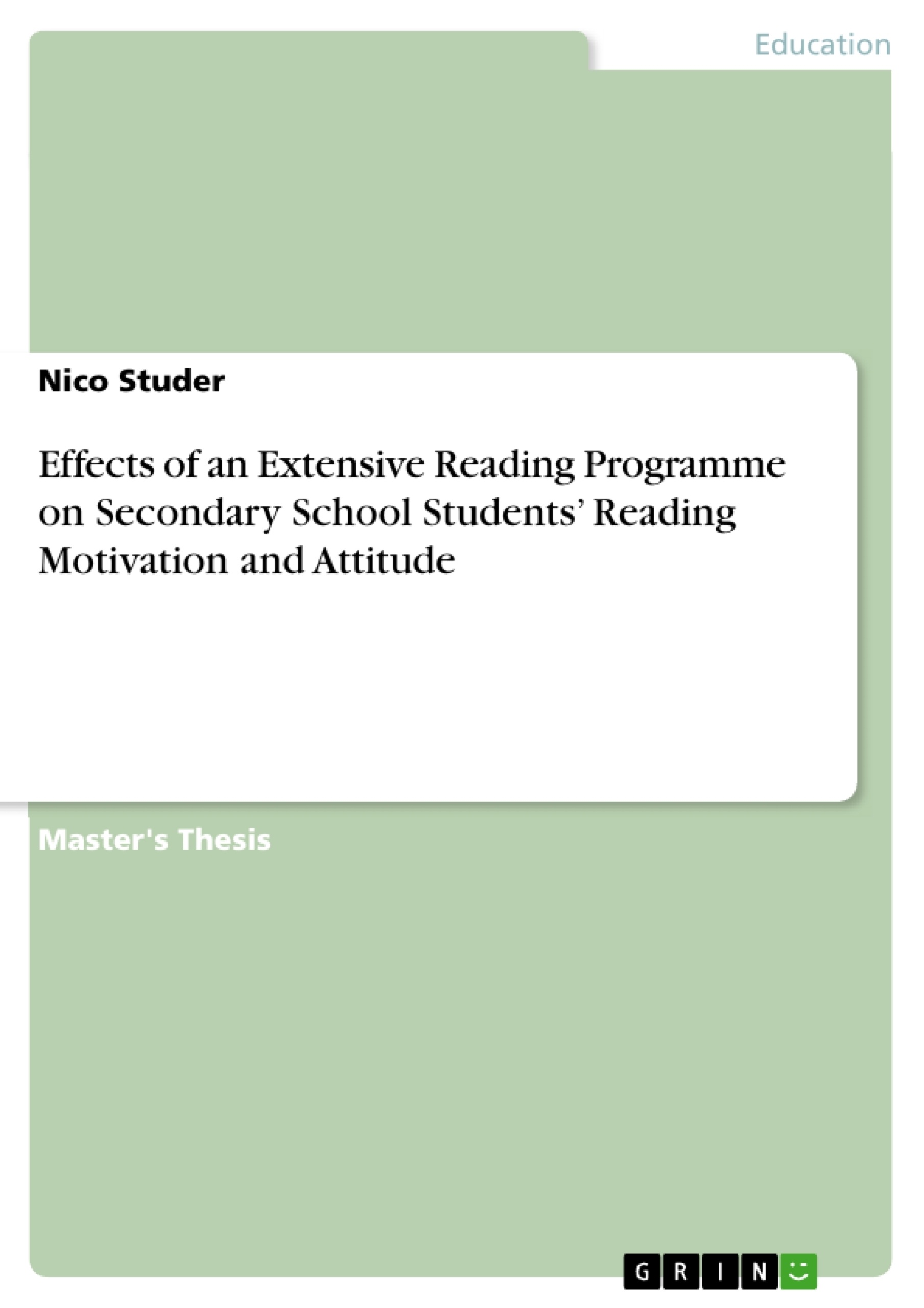In this thesis the influence an extensive reading programme has on the motivation and the attitude of secondary school students regarding reading in English is analysed. Based on the pre-existing theoretical research about extensive reading, two questionnaires were designed in order to measure changes in reading attitude and reading motivation of secondary school students.
The sample consisted of 5 secondary school classes in Switzerland, and it included all three levels of secondary school (A, E & P). 81 Swiss secondary school students aged between 13 and 16 went through a six-week extensive reading programme while three other classes (one of each level) did not and functioned as a control group.
Throughout the six weeks students read 20 minutes at the start of every lesson. They were able to choose graded readers from a mobile library which was installed in the classroom. They did not have to take any tests after reading. The only things they had to do is read in their own tempo, choose a book they like from the library and leave a feedback at the back end of the books they read in order to inform the next reader of the same book. After six weeks of extensive reading, the changes in reading attitude and reading motivation were quantified through the second survey.
All test groups except for the level P class (which is the highest level in the Swiss school system) showed a statistically significant increase in reading motivation. For the most part, the positive attitudinal changes towards reading in English were dramatic thanks to the characteristics of the extensive reading programme. This became evident because especially A and E secondary school students assessed their reading competence much more highly after the programme, and they had a lot more fun reading than they had expected before the programme.
- Citation du texte
- Nico Studer (Auteur), 2020, Effects of an Extensive Reading Programme on Secondary School Students’ Reading Motivation and Attitude, Munich, GRIN Verlag, https://www.grin.com/document/984812



